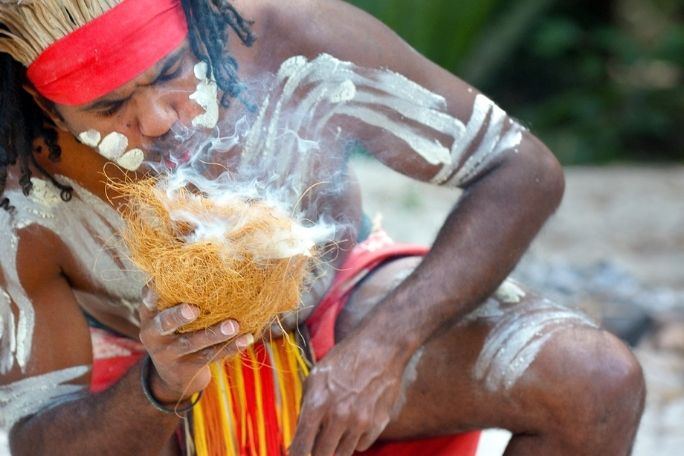Lesson summary
In this English lesson, students will identify and explore ideas and viewpoints from two key texts: Victor Steffensen’s Fire Country (2020) and Bruce Pascoe and Bill Gammage’s Country: Future Fire, Future Farming (2021) and the website: ‘The Living Knowledge Place’. Students will complete a silent conversation, and reflect on their learning.
Learning intentions:
Students will...
- analyse a text to build knowledge and understanding about First Nations people's history, culture, and heritage.
Success criteria:
Students can...
- read and reflect on First Nations recounts of traditional land management
- engage in a silent conversation in a small group
- interpret texts, questioning the reliability of sources of ideas and information.
Lesson guides and printables
Lesson details
Curriculum mapping
Australian curriculum content descriptions:
Year 7 English:
Identify and explore ideas and viewpoints about events, issues and characters represented in texts drawn from different historical, social and cultural contexts (ACELT1619).
Year 8 English:
Explore the interconnectedness of Country/Place, People, Identity and Culture in texts including those by Aboriginal and Torres Strait Islander authors (ACELT1806).
Syllabus outcomes: EN4-8D.
General capabilities: Literacy, Intercultural Understanding.
Cross-curriculum priority: Sustainability, Aboriginal and Torres Strait Islander Histories and Cultures.
Relevant parts of Year 7 achievement standards:
Students explain issues and ideas from a variety of sources, analysing supporting evidence and implied meaning. They select specific details from texts to develop their own response, recognising that texts reflect different viewpoints. They listen for and explain different perspectives in texts.
Relevant parts of Year 8 achievement standards:
Students interpret texts, questioning the reliability of sources of ideas and information. They select evidence from the text to show how events, situations and people can be represented from different viewpoints. They listen for and identify different emphases in texts, using that understanding to elaborate on discussions.
Level of teacher scaffolding: Medium – teachers are required to group students and explain parameters of Silent Conversation, then facilitate discussion at the end of the session.
Resources required
- A device capable of presenting a video to the class
- Student Worksheets – one copy per student
- Text excerpts – enough for one copy per group of students
Skills
This lesson is designed to build students’ competencies in the following skills:
- Communication
- Community engagement
- Critical thinking
- Social skills
Additional info
We encourage you to undertake the free PD Course How to teach a unit on fire and flood resilience for tips on how to best deliver this lesson.
If you’re concerned about the challenging nature of these topics, consider the free PD Course How to approach trauma in the classroom for information on how best to support your students.
This lesson was made in partnership with
Minderoo Foundation (www.minderoo.org)


Welcome back!
Don't have an account yet?
Log in with:
By signing up to Cool.org you consent and agree to Cool's privacy policy to
store, manage and process your personal information. To read more, please see
our privacy policy here(Opens in new tab).
Create your free Cool.org account.
Many of our resources are free, with an option to upgrade to Cool+ for premium content.
Already have an account?
Sign up with:
By signing up to Cool.org you consent and agree to Cool's privacy policy to
store, manage and process your personal information. To read more, please see
our privacy policy here(Opens in new tab).